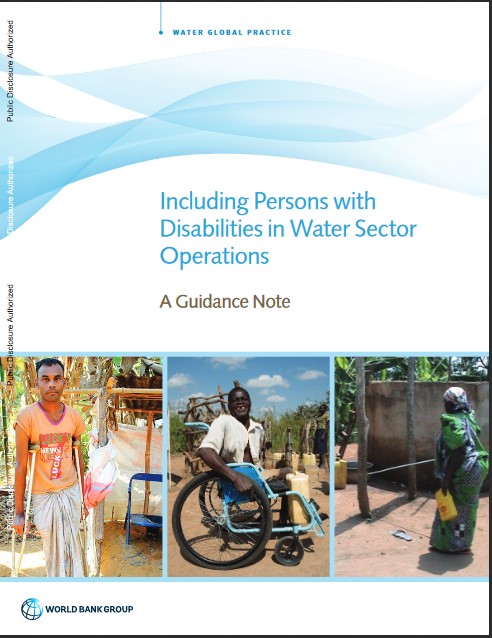Including Persons with Disabilities in Water Sector Operations
 |
guide May 2017 ; 50 pages
Ed. World Bank - Washington
Téléchargeable sous format: PdF
Téléchargeable chez l'éditeur
Site internet: https://openknowledge.worldbank.org/handle/10986/27542
Résumé:
Banque Mondiale, 2017
La présente note d'orientation donne un aperçu des principaux enjeux et défis auxquels les personnes handicapées sont confrontées dans l'accès aux ressources en eau : l'eau potable et les besoins des ménages, l'assainissement et l'hygiène, les professions dépendantes de l'eau et la résilience aux catastrophes. Elle contient des recommandations visant à appuyer des interventions systématiques et durables en faveur d'opérations incluant les personnes handicapées dans le portefeuille de la Banque mondiale dans le domaine de l'eau.
Abstract:
Globally, more than a billion people, approximately 15 percent of the world’s population, or one in seven persons, have disabilities. Of those, 80 percent live in developing countries. This number is expected to increase as the prevalence of disability is impacted by disease, war and conflict, natural disasters, and road traffic injuries, among other factors. In addition, persons over the age of 60 comprise 12 percent of the world’s population; that proportion is set to rise over 20 percent by 2050. There is a strong correlation between aging and the onset of disability. Persons with disabilities make up a sizable portion of the 2.4 billion people who still lack access to sanitation, and the 663 million who lack access to safe drinking water. Although there are inadequate data to assess the exact number of persons with disabilities who face water scarcity and lack of access, there is evidence that points to the relative marginalization and invisibility of this population in water sector development programs. A 2011–12 survey of 16 Area Development Programs run by World Vision in Ethiopia showed that 96.6 percent of people with disabilities and the elderly faced difficulties in accessing basic water facilities.
The note collates recommended strategies and practices in disability-inclusive development programming. It identifies entry points for disability-inclusive water operations in World Bank Group–supported programs, projects and advisory services, and analytics. Case studies, including World Bank Group and external examples, are provided to highlight the use of recommended practices. In addition, the annexes list several technical assistance resources to support task teams and clients in ensuring that infrastructure and services are inclusive of persons with disabilities. Contents:
Chapter 1 Introduction
Chapter 2 Key Issues in Water Access for Persons with Disabilities
Chapter 3 Approaches to Disability-Inclusive Water Sector Operations
Chapter 4Entry Points in World Bank Processes
Mot clef: |
Editeur/Diffuseur: |
|
World Bank - Washington - Etats Unis |
En cas de lien brisé, nous le mentionner à communication@pseau.org